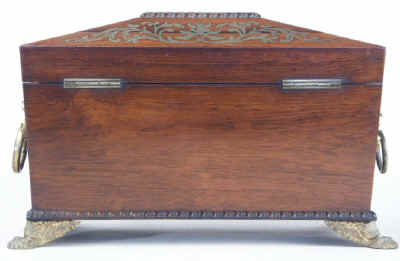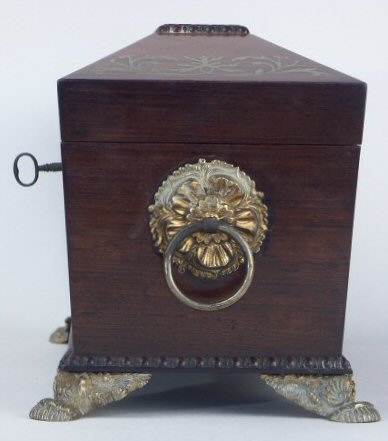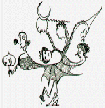 |
ANTIQUE BOXES
at the Sign of the Hygra
2 Middleton Road
London E8 4BL
Tel: 00 44 (0)20 7254 7074
email: boxes@hygra.com |
Antique Boxes in English Society
1760 -1900
by ANTIGONE
Tea Caddies and Tea
|
|
| News | Buying
| Contact us
| Online History of boxes
| The Schiffer Book | Advanced
Search |
| Rosewood three
compartment brass Inlaid Tea Chest with crystal bowl Circa 1825.
|
|
A Rosewood three
compartment brass Inlaid Tea Chest with gadrooned
framings having twin lift-out wooden canisters
flanking a cut crystal bowl standing on embossed gilded brass feet
and with drop handles, Circa 1825.
It measures 13 inches
wide by 6.5
inches deep and it is 8.25 inches high including feet:
33 cm wide by 16.5 cm deep by 21
cm
high.
|
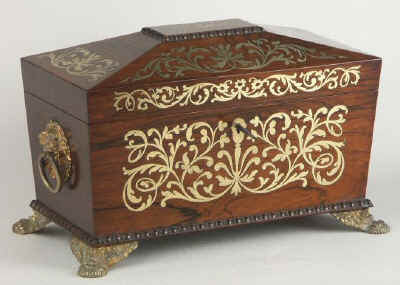
|
|
|
|
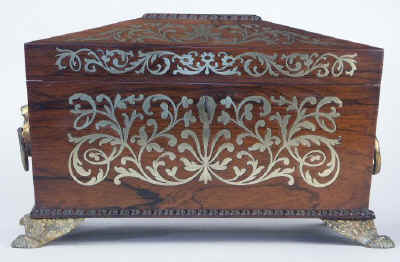
|
This piece demonstrates a truly
glamorous use of brass inlay. Although still in a controlled pattern,
both the shape of the box and the design are quite elaborate.
The Design is symmetrical yet fluid,
starting from a central neo classical palmette motif and developing
into more naturalistically trailing stylized flora. This is
characteristic of the George IV period.
|
|
|
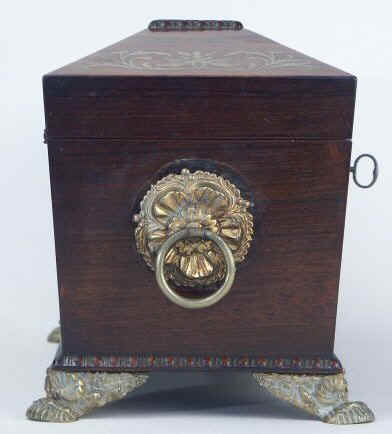
|
The embossed drop ring handles are particularly fine. The chest is
also accented with gadrooning and stands on stylized paw feet.
|
|
|
|
|
|
|
|
|
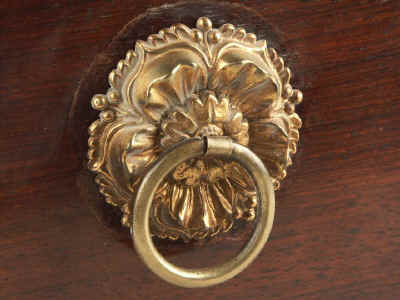
|
The handles are held in
place by a strap which passes over the ring and is splayed
out on the inside of the chest. This method of fixing invariably
becomes a little loose. The imprint showing that this handle has
lived here for ever is clearly visible.
|
|
|
|
|
|
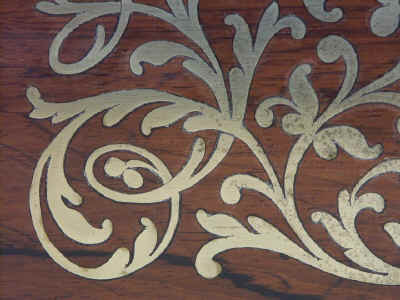
|
The accuracy of the inlay is
exceptional. There is a fluid curve to the brass which is inlaid into
the rosewood. This is inlay at its height. The cutting line
between the two materials is almost invisible.
|
|
|
|
|
|
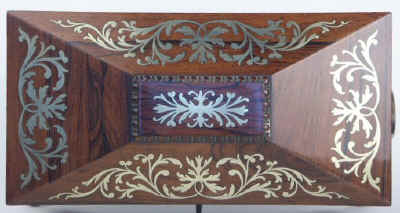
|
Top view showing the striations in
the figure of the wood. The Design is symmetrical yet fluid,
starting from a central neo classical palmette motif and developing
into more naturalistically trailing stylized flora.
|
|
|
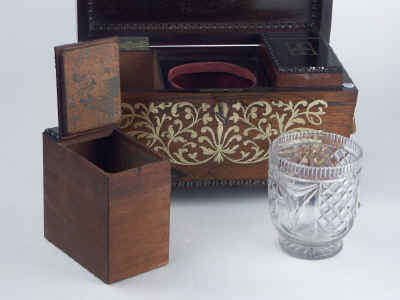
|
The interior contains two lift out
containers also in rosewood. The lid is lined in rosewood as are the
facings and the bowl holding compartment.
The interior bottom part of the
caddy is lined in mahogany which is edged in rosewood.
The lift out containers are of solid mitered construction and
retain much of the original lead lining. The lead lining is worn on
the lids.
The inside of the lid and the edges of
the canisters are framed with gadrooning.
The tops of the canisters are
decorated with inlaid brass fleur-de-lis. This motif was favored by
George IV for its association with the Bourbon French royal family.
|
|
|
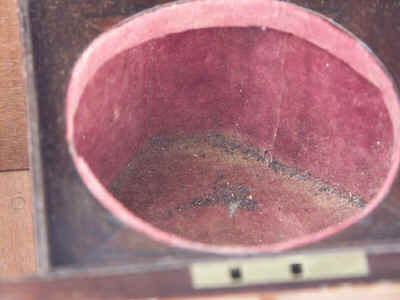
|
The velvet lined bowl well with
mitered rosewood table.
|
|
The quality of workmanship of this
chest is particular. The hinges look undisturbed since first fitted.
The screws on this hinge even line
up!
The gadrooning to the top panel the
mitered rosewood facings the mahogany linings edged with a rosewood
bead.
|
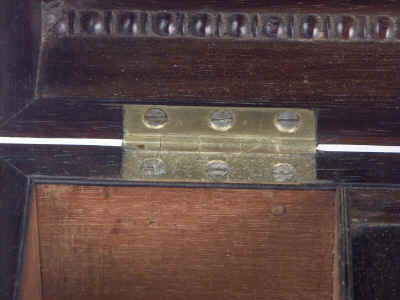
|
|
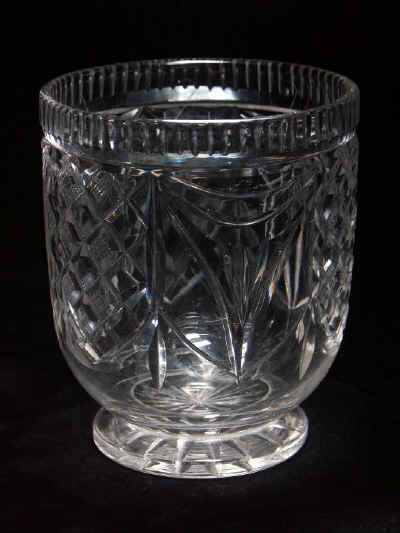
|
The cut crystal bowl is also
exceptional. It has curves and straight hobnail cuts. It is
probably Irish and and is much the same date as the chest. There
are marks on the inside of the lid which show that it may once
have contained a bowl with a less rounded edge-- which was a very
tight fit.
|
|
|
News | Buying
| Contact us
| Online History of boxes
| The Schiffer Book | Advanced
Search
|




